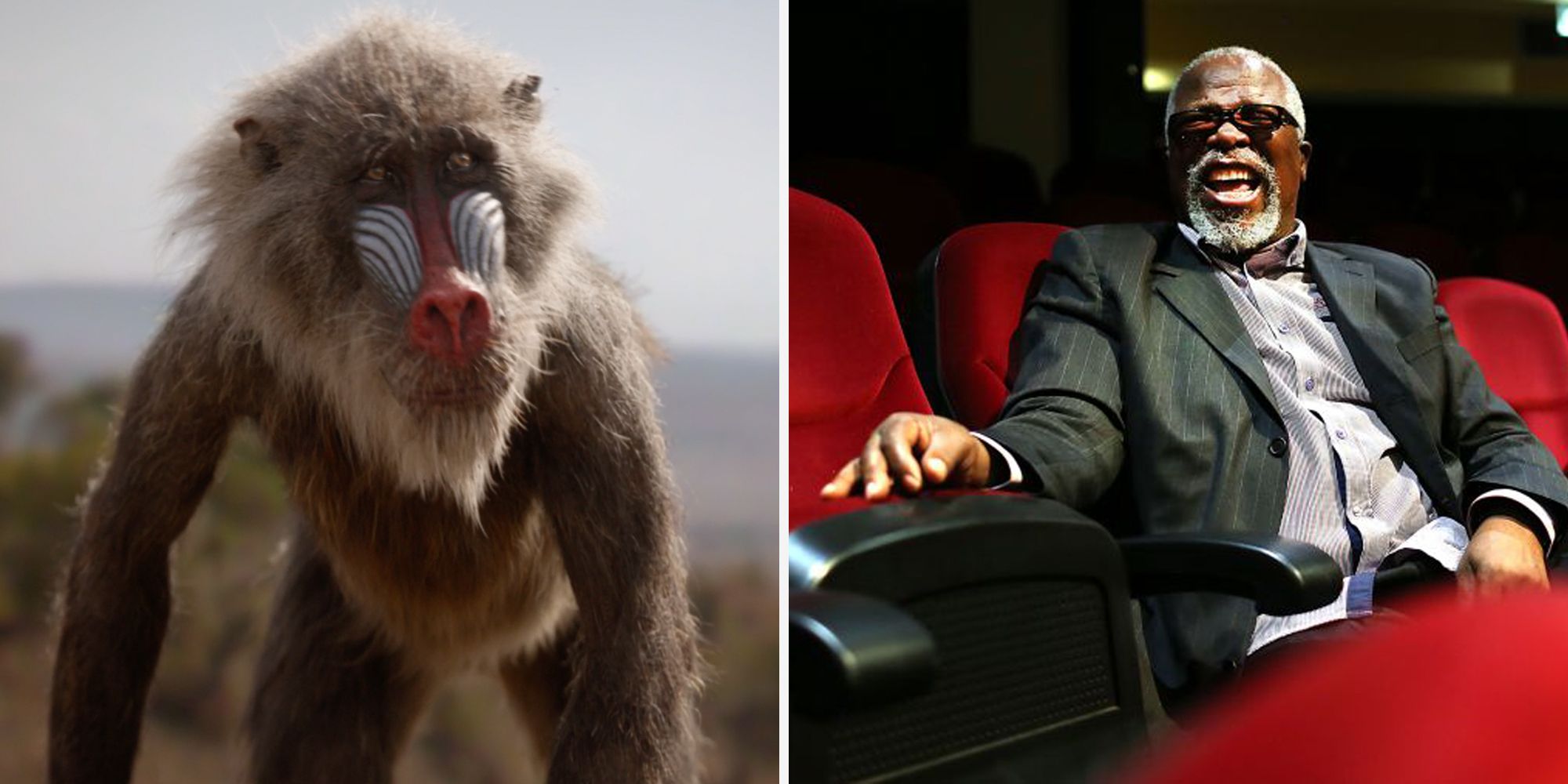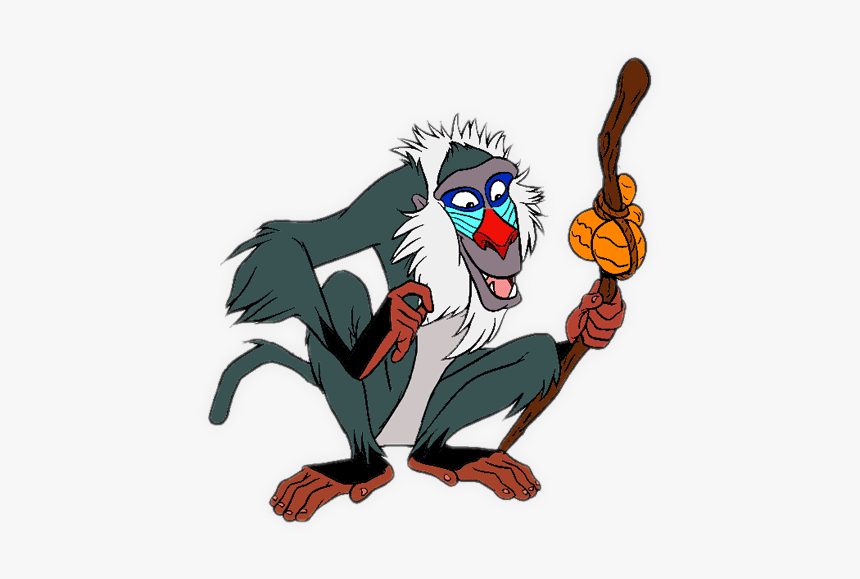Rafiki Type Of Monkey: Discovering The Enigmatic Primate
When you hear the name Rafiki, your mind probably jumps straight to that wise old monkey from The Lion King who carried around a stick and had some sage advice for Simba. But did you know Rafiki isn’t just a character—he’s based on a real type of monkey? Yep, the mandrill is the rafiki type of monkey that inspired the character, and today we’re diving deep into what makes this primate so fascinating.
Now, you might be wondering why we should care about Rafiki or his monkey buddies. Well, aside from being one of the most iconic characters in Disney history, mandrills are incredibly unique creatures with vibrant colors and behaviors that make them stand out in the animal kingdom. So if you’re ready to geek out about primates, you’ve come to the right place.
Here’s the deal: understanding the rafiki type of monkey isn’t just about learning cool facts. It’s about appreciating biodiversity and recognizing how important these animals are to our ecosystems. Let’s jump in and explore what makes mandrills so special—and why they deserve our attention.
- Unveiling The Mysteries Of December 17 Zodiac A Deep Dive Into Sagittarius And Capricorn Traits
- February 22 Zodiac A Deep Dive Into Pisces The Dreamer Of The Zodiac
Table of Contents
- What is Rafiki Monkey?
- Biography of Mandrills
- Habitat of Rafiki Monkeys
- Physical Characteristics
- Diet of Mandrills
- Behavior and Social Structure
- Threats to Rafiki Monkeys
- Conservation Efforts
- Interesting Facts About Mandrills
- Final Thoughts
What is Rafiki Monkey?
Alright, let’s get straight to the point. The rafiki type of monkey is none other than the mandrill, a species of primate that belongs to the cercopithecidae family. These bad boys are known for their striking appearance and are often considered the largest monkeys in the world. Yep, you read that right—these guys aren’t messing around when it comes to size and style.
But what makes mandrills stand out? Well, aside from their impressive build, they’ve got some seriously colorful features. We’re talking bright blue and red markings on their faces, along with a butt that’s practically neon. And before you roll your eyes, that’s actually a thing—mandrills use those colors for communication and mating purposes. Who knew butt bling could be so important?
Why Rafiki Was Inspired by Mandrills
Now, let’s talk about why Disney chose mandrills as the inspiration for Rafiki. It’s not just because they’re cute (although they totally are). Mandrills are known for their wisdom and leadership qualities in the wild, which perfectly aligns with Rafiki’s role as the mentor figure in The Lion King. Plus, who wouldn’t want a monkey with a stick cracking jokes and giving life advice?
- Famous Birthdays Celebrating The Legends Who Shaped Our World
- San Diego Uber Driver Forum Your Ultimate Guide For Success
So next time you watch The Lion King, take a closer look at Rafiki. You’ll notice those distinct mandrill features, from the colorful face to the long tail. It’s a subtle nod to nature that adds an extra layer of depth to the character.
Biography of Mandrills
Let’s dive into the nitty-gritty of mandrills. These primates are native to the rainforests of equatorial Africa, and they’ve been around for thousands of years. They’re social creatures that live in large groups called hordes, and they play a crucial role in maintaining the balance of their ecosystems.
Data and Biodata
| Scientific Name | Mandrillus sphinx |
|---|---|
| Average Weight | 30–60 kg (66–132 lbs) |
| Average Height | 61–76 cm (24–30 in) |
| Lifespan | 20–30 years in the wild |
| Habitat | Tropical rainforests of West and Central Africa |
As you can see, mandrills are pretty hefty compared to your average monkey. They’re built for strength and survival, which makes them perfectly suited for life in the jungle.
Habitat of Rafiki Monkeys
Mandrills call the dense rainforests of West and Central Africa home, where they spend their days foraging for food and socializing with their buddies. These forests provide the perfect environment for mandrills, offering plenty of cover and resources to sustain their large populations.
Adaptations to Their Environment
One of the coolest things about mandrills is how they’ve adapted to their surroundings. For example, their powerful jaws and sharp teeth allow them to crack open hard nuts and seeds, giving them access to food sources that other animals can’t reach. Plus, their colorful faces help them blend in with the vibrant foliage of the rainforest.
And let’s not forget about their butt bling. That bright coloration serves as a signal to other mandrills, helping them communicate and maintain social order within their groups.
Physical Characteristics
Now, let’s talk about what makes mandrills so visually striking. As we mentioned earlier, they’ve got some seriously colorful features that set them apart from other primates. But what else makes them unique?
- Size: Mandrills are the largest monkeys in the world, with males weighing up to 60 kg (132 lbs).
- Coloration: Their faces are adorned with bright blue and red markings, while their butts boast a vibrant pink hue.
- Jaws: Mandrills have powerful jaws and long canine teeth, which they use for both defense and foraging.
- Tail: Despite being classified as monkeys, mandrills have short, stubby tails that don’t provide much support for climbing.
These physical traits not only make mandrills stand out in the animal kingdom but also play a crucial role in their survival.
Diet of Mandrills
So, what do mandrills eat? Well, they’re omnivores, which means they enjoy a varied diet that includes fruits, nuts, seeds, insects, and even small animals. This diverse diet helps them thrive in their rainforest habitat, where food sources can be unpredictable.
How They Forage
Mandrills are skilled foragers, using their strong jaws and sharp teeth to crack open tough nuts and seeds. They also use their hands and feet to dig for insects and other small creatures, making them versatile hunters. And let’s not forget about their keen sense of smell, which helps them locate food even in the densest parts of the forest.
Fun fact: Mandrills are known to store food in their cheek pouches, allowing them to carry large quantities of food back to their group. Talk about efficiency!
Behavior and Social Structure
Mandrills are highly social creatures that live in large groups called hordes. These hordes can consist of hundreds of individuals, making them one of the largest social groups in the primate world. But how do they maintain order in such large groups?
Communication and Social Bonds
Mandrills use a variety of vocalizations, facial expressions, and body language to communicate with each other. They also engage in grooming behaviors, which help strengthen social bonds and reduce tension within the group. And let’s not forget about those colorful faces and butts—these physical traits play a key role in communication and social signaling.
Interestingly, mandrills have a strict social hierarchy, with dominant males leading the group and controlling access to resources like food and mates. This hierarchy helps maintain order and ensures the survival of the group.
Threats to Rafiki Monkeys
Unfortunately, mandrills face a number of threats in the wild, including habitat loss, hunting, and disease. Deforestation and human encroachment on their rainforest habitats have significantly reduced their available living space, making it harder for them to find food and shelter.
Hunting and Poaching
Another major threat to mandrills is hunting and poaching. In some parts of Africa, mandrills are hunted for their meat, which is considered a delicacy. This illegal trade has had a devastating impact on mandrill populations, pushing them closer to extinction.
Conservationists are working hard to combat these threats, but it’s a uphill battle. Education, law enforcement, and community involvement are all crucial components of protecting these amazing primates.
Conservation Efforts
Thankfully, there are several organizations and initiatives dedicated to conserving mandrills and their habitats. These efforts focus on protecting rainforests, combating illegal hunting, and raising awareness about the importance of mandrills in their ecosystems.
How You Can Help
There are plenty of ways you can get involved in mandrill conservation. You can donate to reputable organizations, volunteer your time, or simply spread the word about the challenges facing these amazing primates. Every little bit helps, and together we can make a difference.
Interesting Facts About Mandrills
Before we wrap things up, here are a few fun facts about mandrills that you might not know:
- Mandrills are the largest monkeys in the world.
- They have the longest canine teeth of any land mammal.
- Their bright colors are used for communication and mating purposes.
- Mandrills can store food in their cheek pouches.
- They live in large groups called hordes, which can consist of hundreds of individuals.
These facts just scratch the surface of what makes mandrills so fascinating. There’s always more to learn about these incredible primates!
Final Thoughts
So there you have it—the rafiki type of monkey is none other than the mandrill, a species of primate that’s as fascinating as it is beautiful. From their vibrant colors to their complex social structures, mandrills are truly remarkable creatures that deserve our attention and protection.
If you’ve learned something new today, I’d love to hear about it in the comments below. And if you’re feeling inspired to take action, consider supporting a conservation organization or spreading the word about the importance of protecting these amazing primates. Together, we can ensure that mandrills continue to thrive in the wild for generations to come.
Until next time, keep exploring and stay curious!



Detail Author:
- Name : Kaelyn Bartell
- Username : meagan48
- Email : reinger.corine@lebsack.biz
- Birthdate : 1970-05-16
- Address : 766 Johnson Coves Apt. 966 Kaleighville, IN 22874-1329
- Phone : (559) 279-9375
- Company : Tromp Group
- Job : Landscape Architect
- Bio : Odit itaque nostrum est qui. Culpa itaque perspiciatis et beatae sit. Nostrum rerum voluptate voluptas itaque dolore.
Socials
instagram:
- url : https://instagram.com/ninamurazik
- username : ninamurazik
- bio : Amet omnis sit accusantium ea. Ratione et autem perferendis omnis. Ex et earum nam velit.
- followers : 2417
- following : 2252
tiktok:
- url : https://tiktok.com/@nina9386
- username : nina9386
- bio : Est sint fugiat odio sit voluptatem et ratione. Et et dolorum omnis nesciunt.
- followers : 5584
- following : 1743
linkedin:
- url : https://linkedin.com/in/murazik2008
- username : murazik2008
- bio : Sed quas quod aliquam.
- followers : 6943
- following : 2312
twitter:
- url : https://twitter.com/nina.murazik
- username : nina.murazik
- bio : Nisi tempore consequatur reprehenderit est deserunt. Rem ducimus odio ut qui. Est ipsam distinctio esse qui incidunt illo.
- followers : 206
- following : 546